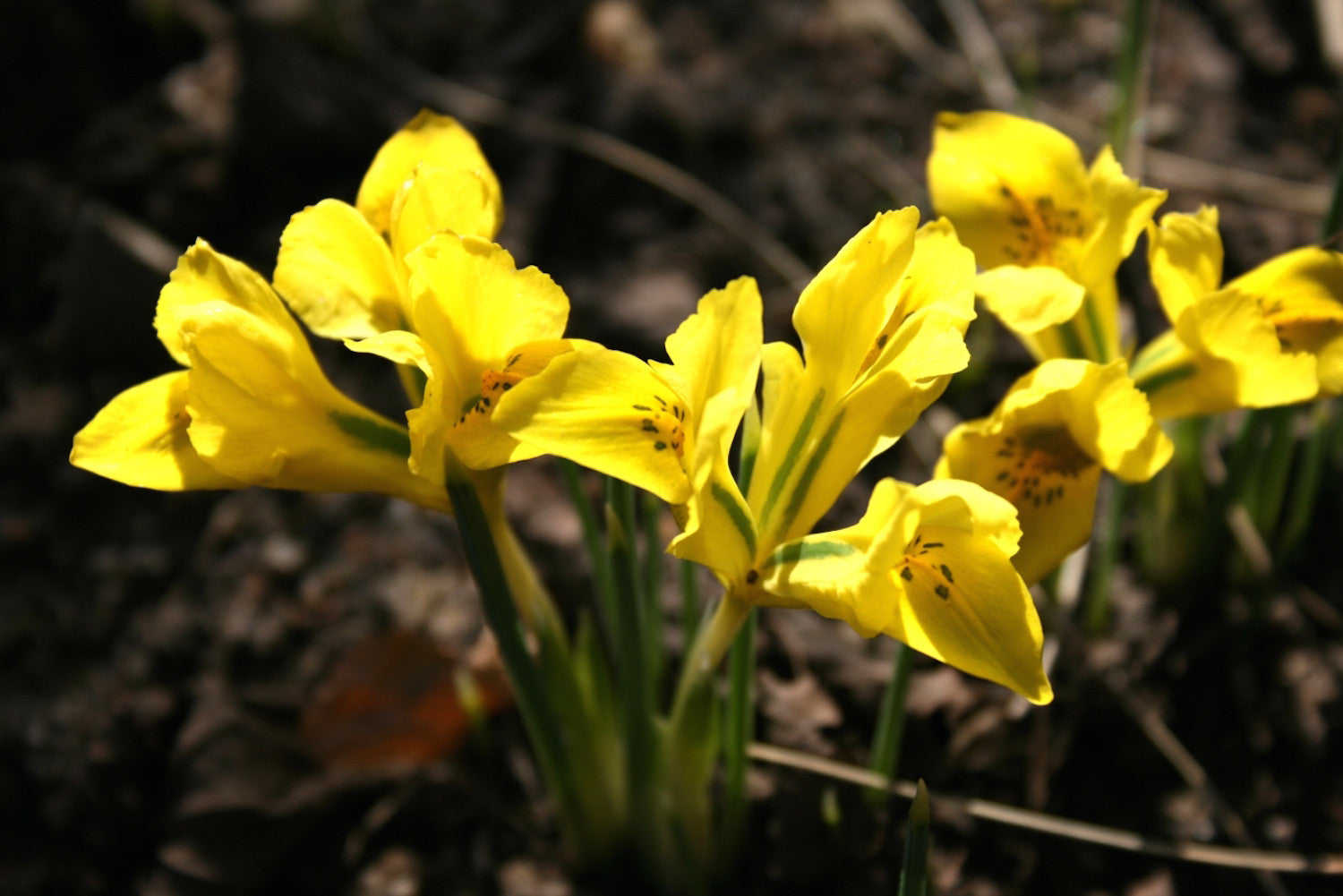Iris danfordiae
Approx. 0.5 litre pot
About this cultivar:
Iris danfordiae is a yellow-flowered low-growing bulbous iris that blooms at about the same time as snowdrops (Galanthus), glory-of-the-snow (Chionodoxa) and the early crocuses. Bright primrose-yellow flowers with tiny brown or black spots on the falls appear on naked stems in spring. Narrow, grass-like leaves elongate after bloom, but eventually disappear by late spring as the plants go dormant. The flowers have a sweet fragrance.
This species was introduced from Turkey in 1876 by Mrs C. G. Danford, an English plant hunter of the Asia minor regions. Often they do not bloom every year & do not have as "complete" a standard iris "flag" flower. thus to some they're simply not as interesting as the reticulated iris. However they are tempting even so because the reticulata species does not include any yellow variety among its numerous cultivars. They also seem to naturalise with great ease.
- Position: Full sun, partial shade
- Soil: Almost any soil, grows well in Ballyrobert
- Flowers: January, February
- Other features: Suitable for Container
- Hardiness: Fully hardy - grows well in Ballyrobert
- Habit: Clump forming
- Foliage: Deciduous
- Height: 0 - 15 cm (0 - 0.15 ft)
- Spread: 0 - 15 cm (0 - 0.15 ft)
- Time to full growth: 2 to 5 years
- Plant type: Herbaceous Perennial
- Colour: Green, yellow
- Goes well with: Hosta, Hemerocallis, Geranium
About this genus:
Iris (i-ris) is a genus of 260–300 species of flowering plants with showy flowers. It takes its name from the Greek word for rainbow, referring to the wide variety of flower colours found among the many species. As well as being the scientific name, Iris is also used as a common name. Long in cultivation there seem to be as many cultivars as plants. Culturally the genus has had quite an impact. The fleur-de-lis, a stylized Iris, first occurs in its modern use as the emblem of the House of Capet (rulers of France 987 to 1328). It is also the universal symbol for Scouting. Many artists have a 'thing' with Iris, not least Van Gogh- who was a fan of Iris (not just sunflowers).... see images opposite!
As a group, Iris species can range from drought-tolerant dry land perennials to bog dwellers and from sun to shade, so there is no set of cultivation rules for the genus as a whole. In general though the cultivars we have in our garden (and sell), are tough, low maintenance plants perfect for wet gardens and similar sites.
Try pairing irises in the garden with Hosta, Hemerocallis, Geranium. They also look great as a cut-flower; the reason you don't get them in florists is that they don't transport well.


















